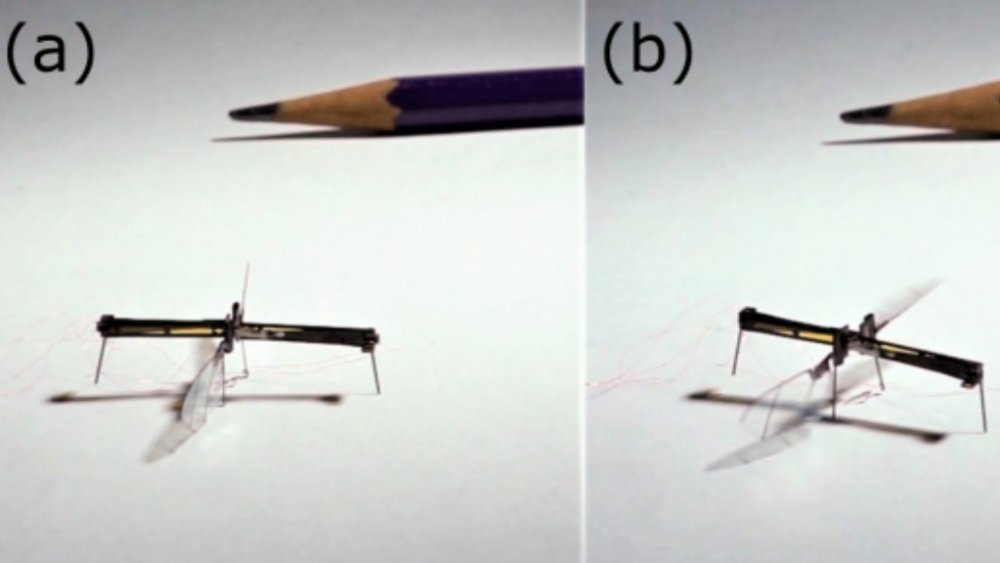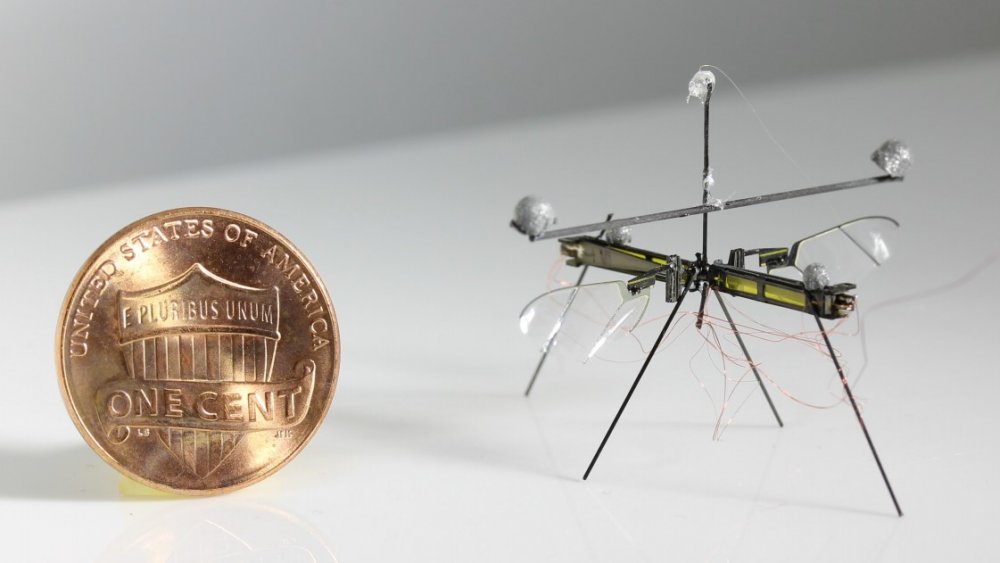Researchers Create 'RoboFly', A Penny-Sized Flying Robot For Land, Sea And Air
As we inch ever closer to the world promised us by Blade Runner, robotic animals are becoming available in varieties which once might have seemed, to the layman, dumb. Long forgotten are the days when a loving autonomous pet droid was only available in Poo-Chi and Nintendo's R.O.B. flavors. Today, should you possess the necessary funding or the force of will necessary to break into a lab, you can get yourself a Pigeonbot, adopt a long-suffering Boston Dynamics quadruped, or rescue a senior member of the Rock-Afire Explosion from an abandoned Showbiz Pizza.
And now, at long last, the final gaps in the animatronic animal kingdom are being filled in, as researchers at the University of Washington have announced the genesis of the Age of RoboFly.
RoboFrogs are going to love them
RoboFly, which is a tiny, flapping-wing micro-robot and not, sadly, a recently unearthed Rudy Ray Moore screenplay, represents a significant step forward in miniature robotics technology. Its body, which is about the size of a penny, is "capable of multi-modal locomotion," according contributing researcher Yogesh Chukewad. The roughly 95 milligram creation can fly, walk, and skip across the surface of the water.
According to an interview with TechXplore, it began as a variation on RoboBee, a project that senior author Sawyer Fuller worked on at Harvard. RoboBee, while around the same size as RoboFly, required time and labor-intensive efforts to produce, calling for delicate construction performed under a microscope. With RoboFly, researchers managed to simplify the process, developing a chassis made from a single laminate sheet rather than multiple, impossible-to-find-if-you-drop-them parts. Its ability to traverse the land, sea, and air also sets it apart from its colleagues in the field, as it opens up a world of commercial applications like search and rescue work, as well as pinpointing gas leaks and seeking out chemical spills in open waters.

